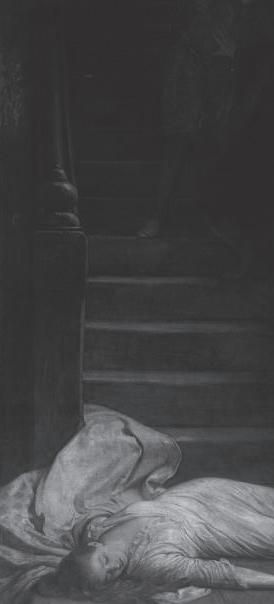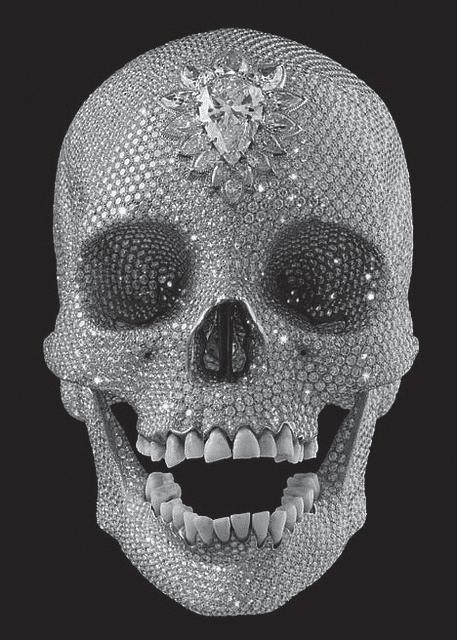
3 minute read
John J. Trause
Gaius Caligula, Gephyromaniac
John J. Trause
[2. Life on the Edge: Marginality as the Center of Public Art Inside the gallery/museum, the artist functions as the center of a particular system; once outside that system, the artist is lost between worlds — ]
=> “the artist’s position in our culture is marginal. The public artist can turn that marginality to advantage. Forced, physically, off to the side, the public artist is asked to deal not with the building but with the sidewalk, not with the road but with the benches at the side of the road, not with the city but with the bridges between cities.” <= [Outside and in between centers, the public artist is under cover; public art functions, literally, as a marginal note; it tries to comment on, and contradict, the main body of the text as a culture.] VITO ACCONCI
Gaius Caligula, gephyromaniac, When he was Emperor of ancient Rome, being Heir to Tiberius, reigned in insanity: Gaius Caligula, gephyromaniac.
Gaius Caligula, gephyromaniac, When he was Emperor, grew very passionate And more obsessed, one would even say violently, This time with bridges — yes, gephyrophilia.
Gaius Caligula, gephyromaniac, Grew more obsessed and not only with building them, But also he’d just adore being close to them: How could you satisfy such an arch specialty?
Gaius Caligula, gephyromaniac, When he was little had read in Herodotus How in the Persian War Xerxes, the emperor Of all of Persia invaded the Greek mainland
By crossing over what we call the Dardanelles, Then called the Hellespont, gateway to Asia, By building over this body of water a Gigantic bridge, that stretched nearly a mile, so
Gaius Caligula, gephyromaniac, In a mad effort to outdo that emperor Stretched a huge bridge all the way from Puteoli To Bauli over the wide Bay of Naples, and
Gaius Caligula, gephyromaniac, Rode on his chariot, crowned with a golden wreath,
Cloaked in a purple robe, fit for an emperor, Over his bridge — ah yes, gephyrophilia.
Gaius Caligula, gephyromaniac, When on the Rhine in the inlands of Germany, During the time of the German hostilities, Camped on the bridges and maintained his quarters there:
Gaius Caligula out of perversity Sat on a bridge one day arguing violently With the divinity of the Rhine River, as, Deep in insanity he at least thought he was.
When his poor uncle, Tiberius Claudius, Limping and stammering came up to visit him, Gaius Caligula ordered poor Claudius To be thrown into the Rhine as a sacrilege:
Gaius Caligula watched from his bridge as old Claudius, lame and a spastic on land, but in Water as home as a fish, fished around in the Currents until safely he came to shore.
Gaius Caligula, while still in Germany, Rode on his chariot just for the fun of it Over the Rhine in the zone of the enemy, Fearlessly flouting the fears of his bodyguard:
When someone carelessly had remarked what if the Enemy were to show up, very suddenly Gaius Caligula panicked and jumped on his Stallion and raced toward the bridges, and since they were
Loaded with baggage and crowded with servants, he Ordered that he be passed overhead hand to hand: Reaching his bridge, the mad Gaius Caligula Clung to it tightly — yes, gephyrophilia.
Gaius Caligula, gephyromaniac, Had by this time made his claim to divinity Through metamorphosis, so he believed it that He was as powerful … nay, he was Jupiter:
Gaius Caligula (let’s not say Jupiter), Since he was Emperor, lived on the Palatine Close by the Capitol, where stood the Temple of Jupiter Optimus Maximus, so the mad
Gaius Caligula built a long bridge from the Roof of his Palace and over the Forum then Up to the Capitol, so he could visit, as He said, his Temple, and there on the Capitol
Gaius Caligula, gephyromaniac, Used to converse with the statue of Jupiter And could be heard laughing, shouting, or whispering: Gaius Caligula, gephyromaniac.
Postscript
Great wits are sure to madness near allied, And thin partitions do their bounds divide.
Dryden
A l’histoire, Caligula, à l’histoire










